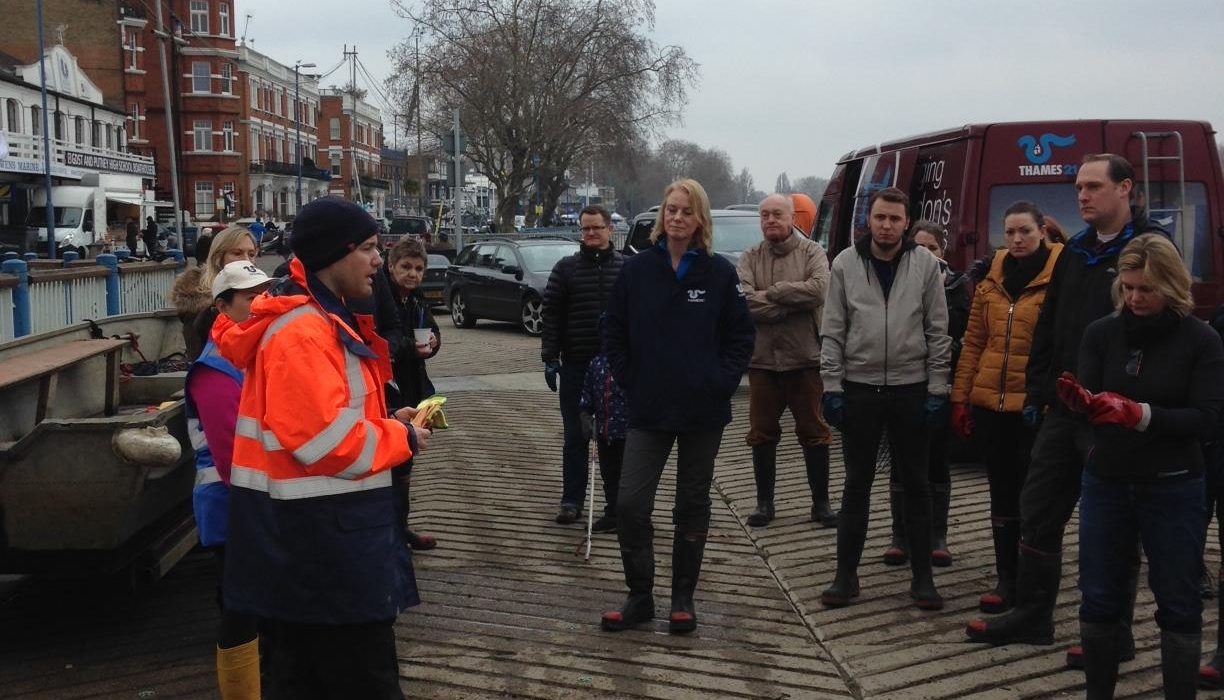Thames21 helps measure and manage the impact of Boat Race on plastic litter

On Sunday March 25 Thames21 helped to measure and manage the impact of plastic litter in the Putney area of the Thames, in the wake of the Boat Race.
Working with Boat Race sponsor BNY Mellon, Newton Investment Management and the Boat Race Company we ran transect surveys along the foreshore in Putney on the morning of Sunday 25, as part of our flagship citizen science programme Thames River Watch.
We also ran a public clean-up of the foreshore between Putney Embankment and Hammersmith Bridge at the same time, joined by Putney Conservative MP Justine Greening and Emma Howard Boyd, chair of the Environment Agency.

We found 223 cable ties on the ground near Putney embankment, and it is likely that these come from the event posters. It seems as if the contractors cut the cable ties to remove the event notices and then left them there. We also found plastic drinking cups and a fair amount of plastic caught up in trees, from the river. Due to councils’ clean up efforts, there was less plastic litter on streets bordering the Thames than in previous years.

The clean up and foreshore survey event attracted attention from London Live, Associated Press and Italian TV Channel RAI.
Separately, Thames River Watch will also monitor for any increase in plastic on key litter hotspots along the Thames following the Boat Race.
Any plastic from the Boat Race is likely to end up in many other litter hotspot sites upstream and downstream from Putney.
The Thames is suffering from a deluge of single-use plastic. Thames River Watch citizen scientists counted more than 4,000 single use plastic bottles in on afternoon last autumn. Thames21 data shows that food packaging is the biggest culprit, accounting for 65 per cent of plastic litter analysed.
Thames21 is working with other campaign groups to look at incentives and barriers for pubs and retail outlets to reduce their plastic use. We believe pubs and retail outlets, which benefit from proximity to the river, have a vested interest in looking after it.
